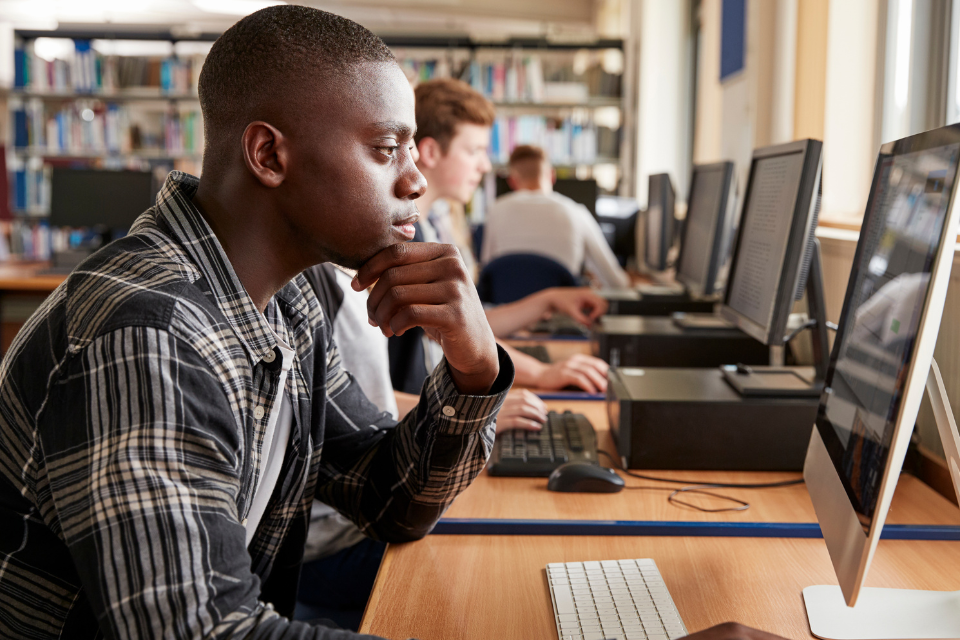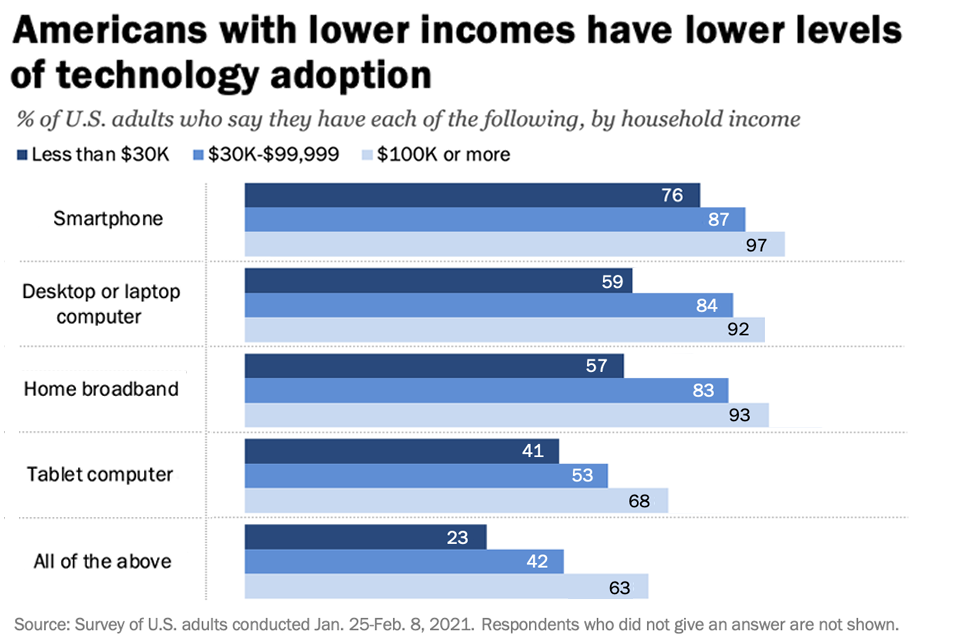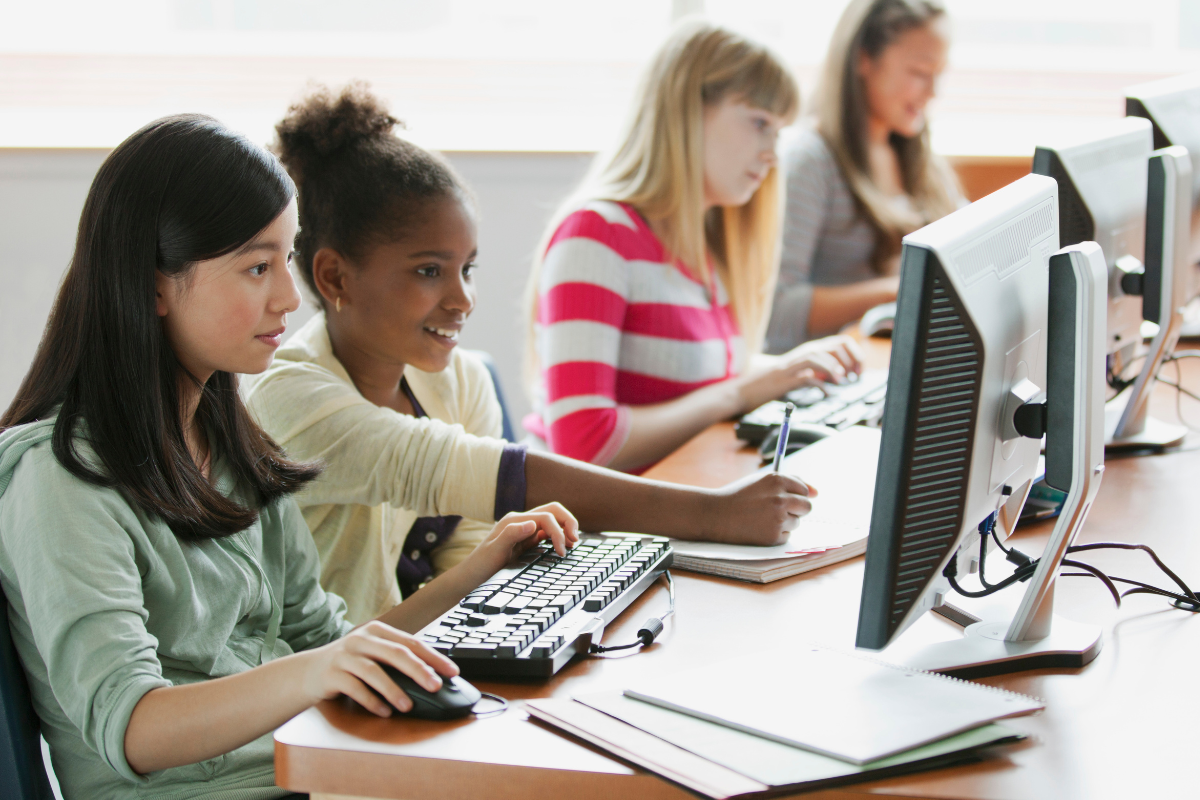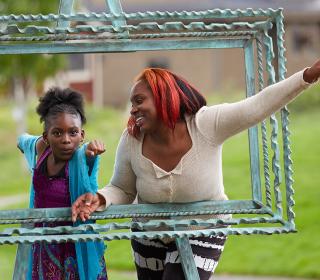The Digital Divide
Many people rely on the internet in their day-to-day lives for school, work, education, entertainment, and more, but one in five American households don’t have internet at home, and those who do don’t always have a reliable connection. 42 million Americans still don’t have broadband access to the internet, particularly those who live in rural areas, and access is 10% – 15% lower in Black and Hispanic households compared to White ones.
Internet access isn’t a luxury: it’s a necessity. The internet gives people access to job opportunities, tools for their education, and various other resources. Restricted access perpetuates systemic inequities, exacerbates the racial wealth gap, and widens the digital divide.

According to a survey by the Pew Research Center, Black and Hispanic individuals are twice as likely to cancel their internet service due to financial insecurity, and less than half of all Indigenous Americans living on reservations or tribal lands have access to high speed internet service versus the national average of 75% – 82% of people, a fact which makes the disproportionate damage BIPOC individuals face from the digital divide even worse.
Digital Equity and Digital Literacy
The importance of having an affordable quality internet connection was emphasized during lockdown and the peak of the pandemic. Schools shifted to online learning, many jobs turned into remote positions, and people who lost their jobs because of COVID were forced to look for other positions online. People who had internet and devices that could connect to the internet were able to continue their work and studies, but people without internet or computers were forced to find alternatives and struggle while their peers left them behind.
Although King County has one of the highest percentages of households connected to the internet across the country (96% according to a 2020 study), 23% of King County adults face barriers to internet access due to finances, lack of broadband availability, or lack of devices that can access the internet. Nearly 7,000 children across King County don’t have computers at home, and 14,600 only have dial-up internet or no internet access at all.

To remedy this, various programs were created to help bridge this divide. Colleges like the University of Washington offered laptop and Wifi hotspot lending programs to help students continue their studies, and Seattle Public Schools (SPS) offered a similar laptop and hotspot lending program to students with help from the Alliance for Education and donations from companies like Amazon, which donated over 8,500 laptops to SPS. At YWCA, we partnered with Comcast to create "Comcast Lift Zones." These Lift Zones help over 140 families living in YWCA permanent housing, supportive housing, and community shelters by giving residents and their children free high-speed internet and devices so they can access online resources.
Across the state, Washington created an initial proposal for the Broadband Equity, Access, and Deployment (BEAD) program, which was approved this year and hopes to play a crucial role in bridging the digital divide by bringing internet access to everyone in Washington. Nationally, plans like the Accessible, Affordable Internet For All Act (AAAA) were proposed, and the FCC’s Affordable Connectivity Program (ACP) provided discounted internet service and computers to qualifying participants.
Although these are all a step in the right direction, it is still a bandaid for a larger problem. Many of these state and national programs take a long time to implement, and others have been phased out entirely, like the aforementioned Affordable Connectivity Program, which ended as of June 1, 2024 due to lack of funding. Just having internet and tools to access the internet also isn’t enough to completely bridge this digital divide – people who weren’t taught how to use these devices efficiently and don’t have guidance may struggle to develop the necessary digital literacy and digital foundation skills to use these tools to their full potential.

To properly bridge the digital divide, we must acknowledge the various factors that contribute to this problem and determine what steps to take to resolve each aspect. Our end goal is digital inclusion – and as defined by The National Digital Inclusion Alliance (NDIA), true digital inclusion must have:
1. Affordable, robust broadband internet service.
2. Internet-enabled devices that meet the needs of the user.
3. Access to digital literacy training.
4. Quality technical support.
5. Applications and online content designed to enable and encourage self-sufficiency, participation and collaboration.
6. Digital Inclusion must evolve as technology advances. Digital Inclusion requires intentional strategies and investments to reduce and eliminate historical, institutional and structural barriers to access and use technology.
Until this happens, YWCA will continue offering access to computers and free technology services at our various locations, like our Seola Gardens Tech Center and YWCA’s Greenbridge Learning Center.
Invest in our current and future services by becoming a reoccurring donor to YWCA. Your support helps us continue offering and expanding programs that support thousands of women and families in our community each year.
Ana Rodriguez-Knutsen is the Content Specialist for YWCA's Marketing & Editorial team. From fiction writing to advocacy, Ana works with an intersectional mindset to uplift and amplify the voices of underrepresented communities.
We share the stories of our program participants, programs, and staff, as well as news about the agency and what’s happening in our King and Snohomish community.


